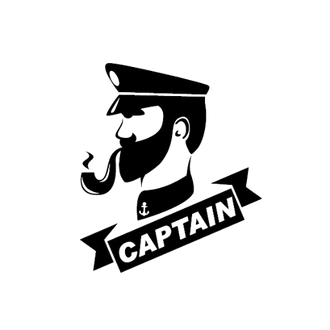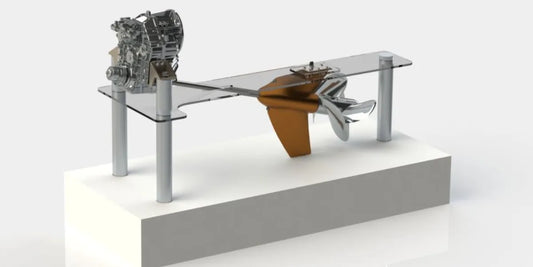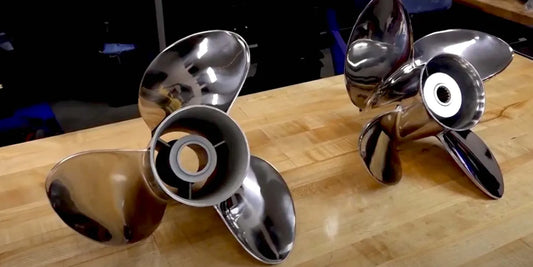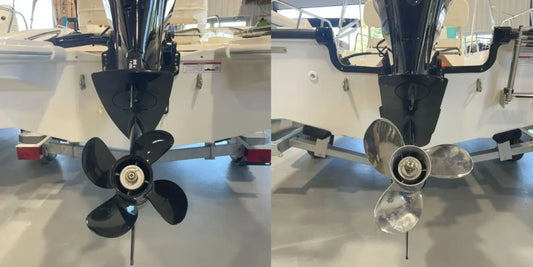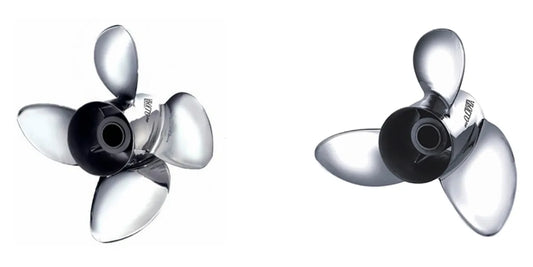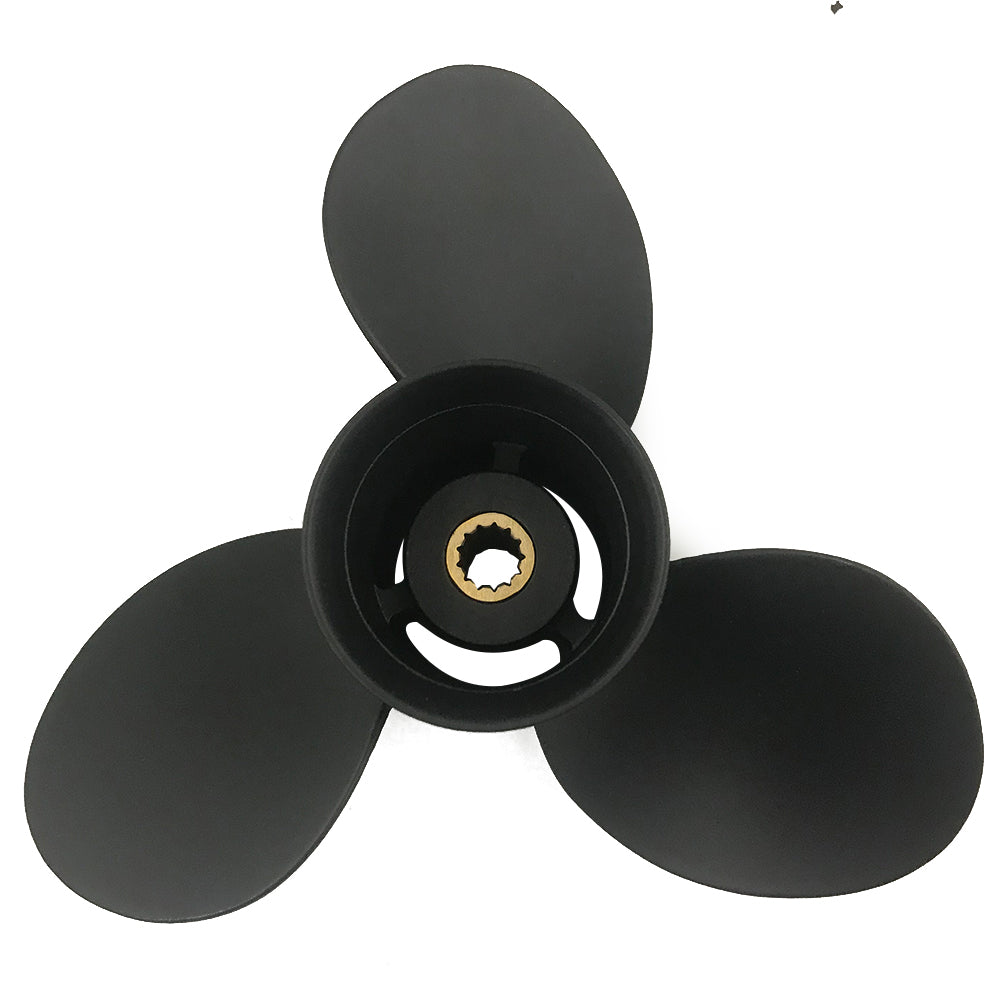The right propeller can mean everything when it comes to boosting the performance of your boat, and stainless steel propellers are undoubtedly among the best ones you can get. Being wear-resistant, highly efficient, and powerful, they truly satisfy boaters' desires to take their boating experience to the next level. But with so many fits, sizes, and features, how does one find the perfect match for their vessel? This guide will take you through the world of stainless steel propellers and discuss the advantages, common considerations, and some good insider tips on selecting the best propeller for your needs. We have everything covered, whether you are after speed, fuel economy, or smooth cruising. Read on to find out how to get that perfect performance on the water.
What Makes a Stainless Steel Propeller Stand Out?

Understanding the Durability of Stainless Steel
In general, stainless steel propellers are known to be extraordinarily durable and, therefore, a choice many boaters choose, especially for performance boats. Consequently, the composition of the material generally includes chromium, nickel, and other alloying elements. Chromium constitutes an essential element: it spontaneously forms a thin oxide film known as a passive layer on the surface of the steel, which prevents rust and corrosion from attacking it even when confronted with a severe marine atmosphere where there is almost constant exposure to saltwater.
The stainless steel propeller is also the best for mechanical wear and corrosion. Its rigidity allows it to perform at its best under pressure and stress, essential when going fast or passing through debris-filled waters. Research and experimentation also showed that stainless steel propellers would generally outlast the aluminum or composite types, meaning fewer replacements save more on long-term maintenance costs. For any boater looking for a trustworthy and long-term solution, stainless steel is among the few choices.
Comparing Stainless Steel and Aluminum Props
Considerations such as performance, durability, cost, and application should be made when comparing steel and aluminum propellers. Steel propellers are stronger than aluminum and can resist rejection under extreme stress. Therefore, they are preferred for high-performance engines and challenging waters. Due to their precision casting, they may incorporate streams and curves that increase the boat's speed, fuel consumption, and handling properties.
Aluminum propellers provide a cheaper option for catering to casual or recreational boaters. These are lighter and cheaper to buy, which makes them more accessible for beginner customers or owners of smaller boats. However, aluminum props tend to wear out, and in cases of obstacles or heavy impacts, aluminum propellers get deformed or broken, requiring replacement often.
Ultimately, the decision whether to go for stainless steel or aluminum depends on the requirements of individual boaters. For those prioritizing performance and durability when challenged, stainless steel will be worth every penny. On the other hand, aluminum propellers are the best option if looking for something cheap and light-duty. Identifying these differences guarantees boaters can choose the best propeller for their boats and water expeditions.
Exploring the Benefits of a 4-Blade Design
Yeah, a 4-blade design has several advantages that suit particular boating needs, ensuring smoother and more efficient operation on the water. The most notable enhanced acceleration feature for the 4-blade propeller is that the additional blade grips the water better, making it perfect for water skiing or towing. Four-blade propellers provide excellent handling characteristics, particularly in conditions that require consideration for stability and control when the water is rough or choppy. They also typically vibrate less than 3-blade propellers, ensuring a quieter and more comfortable ride.
Another essential feature of a 4-blade design is that it provides better performance in the low-speed range, helping anglers or boaters in no-wake zones maintain steady and reliable thrust. However, compared to 3-blade propellers, a slight reduction in top-end speed can be experienced; this is a small compromise more than justified by anyone who puts their money on fuel economy, stability, and mid-range power. By analyzing these parameters and finding the one ideally suited to the particular boating requirement, a 4-blade propeller can significantly enhance the actual boating experience.
How to Choose the Right Stainless Steel Prop for Your Boat?

Factors to Consider: Pitch and Rake
Pitch and rake are terms you must know before selecting a stainless steel propeller, since they can help assess your boat's performance together. Pitch is the distance a prop moves one rotation forward, theoretically with no slippage. A high pitch can push for more speed and requires more power from the engine, whereas a low pitch can speed up acceleration and enhance control.
Rake, instead, describes the angle of the propeller blades with respect to the hub. Applying a high-angle rake on your prop eliminates bow lift at severe speeds or provides that assistance during rough-water conditions. In contrast, low-rake-angle propellers offer better stability and smooth running performance, requiring transport for more massive boats or towing.
When appropriate to your applications, the choices of rake and pitch are optimized to conserve fuel, attain speed, and provide the maneuverability desired by you and in the hull design. Always consult your boat specifications and a marine expert on which configuration is best for you.
Importance of Propeller Shaft Compatibility
To achieve the highest operational efficiency and longevity, it is paramount to ensure compatibility between the propeller shaft and the entire vessel's propulsion system. The propeller shaft is a central component driving the system; it conveys the power from the engine to the propeller. Any incompatibility or improper fit on the shaft results in an inefficient system that may vibrate, wear down, or even fail mechanically.
The diameter, material grade, and shaft length are critical while checking for compatibility. For instance, stainless steel may be preferred because it resists corrosion excellently and maintains a high tensile strength, making it preferable in marine environments. Also, a shaft diameter has to be set per the engine output and propeller size to bear the torque and rotational force without inducing undue stress.
Advanced manufacturing techniques have given rise to balanced, precision-machined shafts capable of reducing vibration and enhancing engine performance. Again, a mismatch of shafts to couplings and propellers can cause energy loss, preventing actual performance from being realized. This should reaffirm the need to thoroughly inspect and maintain driveshaft systems, since even small misalignments may grow into detectable problems over time. Using a well-selected and well-maintained propeller shaft bestows enhanced operational efficiency on a vessel, better safety, and more years of service.
Matching Your Boat's Horsepower and RPM
A boat's horsepower and RPM (revolutions per minute) should be matched accordingly to extract maximum performance and fuel economy. Horsepower refers to the power generated by the engine, whereas RPM measures how fast the engine can run. An engine should ideally be kept working within its design parameters, due to which over-synchronization of these two factors tends to stress and wear down the engine. For example, subjecting the engine to higher than specified RPM most of the time will heat it, damage its components, reduce its life, and slow RPM provides inadequate power and feels sluggish in performance.
Next comes the selection of propellers matching horsepower and RPM. A propeller having an appropriate pitch and diameter keeps the engine's RPM in an optimum range where speed, acceleration, and fuel consumption are best balanced. To check the best RPM range for your engine, look in the manual for your engine manufacturer's instructions. Generally, marine engines reach their highest efficiencies when cruising within a WOT range, something abstractly stated as 4,500 to 6,000 for most modern-day outboard engines.
Another critical point while cruising is always monitoring the engine's RPM. Installing a good tachometer and monitoring RPM as you go allows adjustments to be made instantly if needed. Harmonizing horsepower and RPM results in company cost savings and smoother and safer boating experiences for users.
What are the Advantages of Upgrading to Stainless Steel Boat Propellers?

Enhanced Performance and Durability
Boat owners prefer stainless steel propellers mainly for their varied applications and excellent durability. Second in line is their strength. Stainless steel is much stronger than aluminum, so thinner blades can be manufactured more precisely. This precision ensures better hydrodynamics, enabling greater acceleration, higher top speeds, and better handling in rough waters.
Moreover, stainless steel propellers resist corrosion, making them ideal for use in both freshwater and seawater. They can withstand adverse marine weather conditions for an extended period without adversely affecting their structure. This increase in durability reduces the frequency of propeller change and ensures smooth performance over the long run. Hence, stainless steel propellers are the best remedies for improving efficiency, durability, and reliability.
Improved Fuel Economy and Top Speed
Being a stainless steel propeller, it is designed for the highest performance: maximum efficiency and maximum burst speed of the vessel. The rigid structure of the material allows the blade profiles to be thinned down and hence share less drag and be more hydrodynamically efficient. This means less work for the engines, pushing the same load, thereby directly improving fuel economy. Studies have shown that fuel savings of up to 10-15% can be realized by switching to a properly designed stainless steel propeller, depending on the nature of usage and the boat's design.
Stainless steel's rigidity permits the blades to hold their defined curvature under aggressive conditions where very high RPMs or heavy loading are considered, thus assuring vessels operate at their best top speed. Because of the precision manufacturing and improved designs, these propellers become more responsive and accelerate quickly for a smoother ride. For those who might want to optimize efficiency with prime performance, stainless steel propellers are among the best options.
Better Acceleration and Hole Shot
Stainless steel propellers are fine accelerators and hole-shot performers: key elements for boat owners looking to get on plane quickly or when a sporadic burst of speed is needed. The better blade geometry and finer craftsmanship allow these propellers to deliver more powerful force from the engine to the water. Hence, maximum response time will be achieved to throttle up with smooth transitions at high cruising speeds. Such high performance will be important for waterskiing, wakeboarding, or fishing, where acceleration and brand-new maneuvers are mandatory.
Compared with aluminium propellers, steel ones give greater durability than stiffness, with such a factor contributing to the maintenance of consistency in performance. Santa steel propellers resist flexure at places and times that hinder the nature of high-stress conditions so that they can maintain their maximum efficiency when operated at high RPMs; hence, it affects acceleration and top speed. Now add to the mix that most modern-day stainless-steel propellers have features like ventilating and cupping, which bust cavitation and increase airflow, and you are looking at some serious hole piling. Combining innovative designs and strong materials improves the performance and loving experience on the water among owners who value power and precision.
Why Consider a 4-Blade Stainless Propeller?

Benefits of Shallow Water and Skiing
The 4-blade stainless propeller is a boon for shallow-water boating and skiing. With increased surface area on the blades, it experiences great thrust at lower speeds—the very speeds used when navigating through shallow water that require precise coordination and control. The formation of agitation through strong, low-end torque assists in a controlled build-up of speed, allowing the boat to plane up rapidly while putting the least load on the engine.
For water skiing, the 4-blade propeller generates more stability and smoother towing, making the wake favorable for the skiers. Increased hold and less ventilation help the diver to keep balance and enjoy a constant ride. Furthermore, due to the efficiency of stainless steel, these can operate against abrasive scenarios where soft sediments or debris might prove challenging. The design efficiently suppresses cavitation while improving fuel economy, making it a reliable solution that can be actively employed for many kinds of recreational boating activities.
Impact on Boat’s Speed and Handling
Whatever the propeller's design and material, the boat's performance in terms of speed and handling will be affected. Since stainless-steel propellers are rigid and strong, they do not flex under heavy pressure, which helps boats reach higher speeds and travel more smoothly. With less cavitation, blade dynamics allow for better water grip, giving the boat precise handling even during abrupt turns or under rough water conditions.
According to studies, a vessel with a well-performing propeller sees improvements in acceleration and top speed that are usually 3-5 mph more than aluminum propellers. Blade shape and pitch optimization enhance performance while maintaining stability in different loading situations. These traits make stainless steel propellers suitable for those seeking peak performance and better control in the water. The coming-up designs thus reflect growing interest in getting the best out of efficiency without losing the ability to maneuver, giving a well-balanced and trusted boating experience.
Understanding the Balance Between Top-End Speed and Low-End Torque
If the wonder is for having superb top speed and torque at the low end, one must pick between the two in marine drives. The top speed would ensure that large distances are covered quickly, especially appreciated by speedboats and racers. Low-end torque provides the strong power needed to go heavy on lifting and carrying loads and for smooth acceleration when required, such as in towing or water skiing.
With propeller designs that have set a new modern standard, this balance is taken into consideration through variable pitch propellers, advanced hydrodynamics, and strong materials, all of which address perceptible performance trade-offs. For example, a propeller with a smaller pitch will do quite well from a torque point of view at slow speeds when acceleration is critical. In contrast, the large pitch setting works to cover more distance per rotation and therefore develops more speed.
The numbers show how engine tuning and correct propeller choice, in tandem with engine gear ratio, play such an important role. Proper balance yields a blend of fuel efficiency with the performance one may need. This fine-tuning can offer operators a perfect combination of speed and power that is fitted to their benefit. Awareness of this crucial balance and proper manipulation of the variables can go a long way in enhancing the experience and efficiency of boating to ensure the seamless transport of the boat along the waters.
How Does the Pitch Affect Boat Performance?

Defining the Role of Pitch in Propeller Performance
Unfortunately, the propeller's pitch holds an uncontested position as the most defining factor determining a boat's overall characteristics and performance, and it is fascinating how such a variable holds enormous influence in so many areas. In simple terms, the pitch can be defined as the hypothetical distance a propeller travels forward during one complete rotation with no slippage. A propeller with a higher pitch "bites" more water with each turn and thus moves faster and requires better engine power to work efficiently; in contrast, a lower pitch means the engine can take it easily and accelerate faster, but is limited in speed at the top end. With the basics on how pitch functions, I should now be able to understand how a propeller's selection influences a boat's functionality.
Finding the correct pitch is maintaining a certain balance from experience, depending on what matters, and the type of boating intended. For instance, a low pitch helps tow or water sports where acceleration and power are significant; a higher pitch will give you a good top speed and fuel economy for cruising or long-distance cover. I learned that a correct pitch about the difference between the engine horsepower and maximum RPM should place the engine in its ideal operating range, where it will give optimum performance and, lastly, lessen unnecessary wear and tear on the equipment, resulting in a longer life.
Ultimately, pitch modification is all about tailoring the boat to meet your requirements, which I find empowering. Through trial and error and listening to other professionals, I realized how tiny alterations in pitch can influence the whole boating experience. Therefore, knowing about pitch emphasizes focusing on those technicalities that have real consequences on one's safety, efficiency, and fun while out on the water.
Adjusting Pitch for Better Performance
When it comes to pitch adjustments for better outcomes, I’ve seen that everything falls under the balancing act between efficiency and functionality, given specific boating conditions. The first thing I learned was that the propeller's pitch—how far it theoretically goes through the water in a single revolution—is what gives and takes in speed, loads, and fuel efficiency. A less pitched propeller will give better acceleration and performance under heavier loads, whereas the higher the pitch, the more it is used for achieving top speed on lighter boats. Understanding such dynamics helped me make more informed decisions regarding my boating activities and the environments I was in.
After some trial and error and talking with several experts, I realized that even the most minor changes in pitch can make a difference. On the lower side of pitch with a lot of gear and passengers on board for fishing, acceleration and torque came into play, effectively putting the boat on the plane in a much smoother and controlled manner. Indeed, for cruising on calm waters with little to no load, the higher pitch offers the best speed possible with some fuel consumption. Together with this, I have always maintained an eye on RPM concerning the engine's sweet spot, which has become best practice to synchronize with the available setup.
Broadly speaking, it is an ongoing learning process for me. I realize pitch adjustment has to take into consideration boat weight, water conditions, and intention. It cannot be a solution for all cases; it is rather a variable option for performance. My advice to anyone is to learn first what his boat is about, start experimenting with pitch changes in increments, and consult experts if need be. Truly, this blend of real-world experience and knowledge has made the past few years of boating a lot more fun.
Standard Pitch Issues and Solutions
From my own experience, one common problem with pitch is slow acceleration or sluggish performance off the start. This usually happens if the pitch is too high because it burdens the engine and lowers efficiency. I have experienced my holeshot and responsiveness get much better when switching to a lower-pitch prop when carrying heavier loads or navigating choppy waters. With a lower pitch, the engine is allowed to rev freely, thus producing better torque and quicker thrust.
By contrast, a low-pitched prop will allow the engine to over-rev at high speed, limiting the maximum efficiency. I personally experienced this while trying to make decent bearings for longer trips and maintain good speed; this caused an increase in fuel consumption and undue wear on the engine. The highest pitch for such a case is fine-recommended, as it would help the boat achieve better top speed at optimum RPM.
It has all come down to that balance. Checking performance, listening for odd sounds, and watching RPM at differing speeds have been very important. Having a sound marine technician along the way has been of great help in determining the correct pitch for varying situations. Leaving no stone unturned in the search and embracing change has solved most pitch-related problems smoothly, resulting in high joyful boating.
Reference Sources
-
Choosing the Right Stainless Steel Prop for Your Boat—Captain Propeller discusses stainless steel propellers' durability and performance benefits.
-
How to Choose Between Aluminum and Stainless Steel Props—Mercury Marine highlights the performance and handling advantages of stainless steel over aluminum.
-
Your Guide to the Key Features of a 4-Blade Stainless Prop - Buy Propeller - Explores stainless steel propellers' design and handling benefits.
Frequently Asked Questions (FAQs)
Q: What makes a stainless steel propeller better than one of aluminum?
A: Stainless steel propellers are more durable than aluminum propellers and resist corrosion very well. Hence, stainless steel offers better handling and can be serviced longer for high-performance applications and use in a saltwater environment.
Q: Why is a 4-blade propeller suggested for better handling?
A: A 4-blade prop can improve overall performance, such as acceleration or holeshot. It can also offer better grip in rough water and a smoother ride. A 4-blade prop reduces vibration and can result in fuel savings at cruising speeds.
Q: How does the blade design affect the propeller's performance?
A: The geometry and design of the blades influence propeller performance considerably; for instance, those of Solas propellers. A well-designed blade that can aid in greater thrust and lower drag will also help boats work at higher speeds with less effort.
Q: What is the function of trim tabs concerning the propeller?
A: Trim tabs are used alongside the prop to maintain and alter the boat's attitude, thereby enhancing handling. They are designed to fine-tune the hull's position in the water, minimize drag, and maximize stability and speed from a price-to-fuel-efficiency perspective.
Q: Why would someone favor choosing a stainless steel prop for his Mercury Marine outboard?
A: A stainless prop would grant marine outboards better durability and high performance, particularly for those into watersports or negotiating in rough or saltwater conditions. Compared to aluminum, stainless steel offers a greater ability to resist dings or dents.
Q: What can a new propeller do to improve the overall performance of my boat?
A: A new propeller, especially a high-performance stainless steel one, improves your boat's speed, fuel economy, and handling. It also lessens vibrations and improves acceleration and holeshot, which altogether culminate in a great upgrade to your boating experience.
Q: What are the criteria determining the choice of a propeller for a Yamaha outboard?
A: When picking out a propeller for your Yamaha outboard, consider the number of blades, the material (such as a stainless one from Solas or Mercury), and the design that best meets your boating pursuits. Also, consider maximum speed (mph), load capacity, and water conditions.
Q: How does the wide-open throttle (WOT) range affect propeller selection?
A: The wide open throttle (WOT) range is vital when choosing a propeller because it ensures the engine runs satisfactorily at full wide open speed (WOT). Therefore, WOT should be considered, and the right prop must maintain engine RPM in the WOT range to get maximum efficiency and to prevent engine damage.
Q: What is the importance of a hub kit in propeller installation?
A: A hub kit is vital for propeller installation. The hub absorbs shock, thereby reducing damage and wear to the propeller and the lower unit. Further, the hub also lets the prop slip in extreme cases, protecting the drive system from harm.
Q: Where could I find expert opinions on the best prop for the boat?
A: A local marine shop or boating forum can give you some good advice from experienced boaters. West Marine and similar retailers also may provide expert advice or at least guide you toward the best prop for your specific needs.
